新概念三第3课课件(课堂PPT)
- 格式:ppt
- 大小:226.00 KB
- 文档页数:35
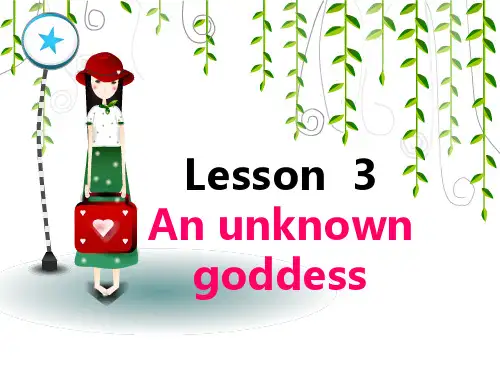
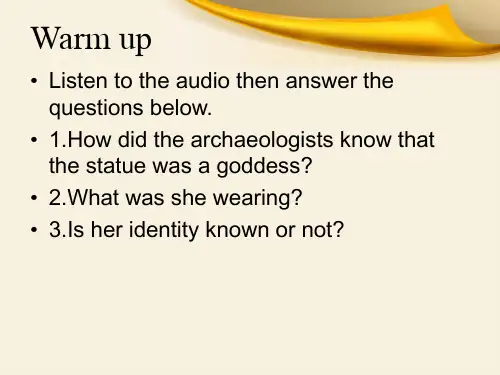

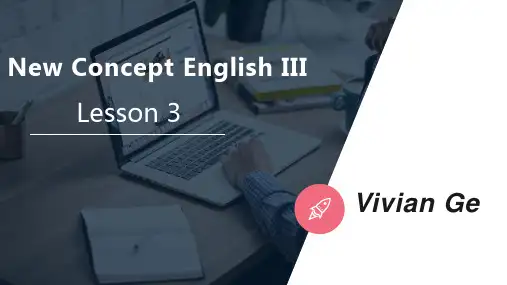
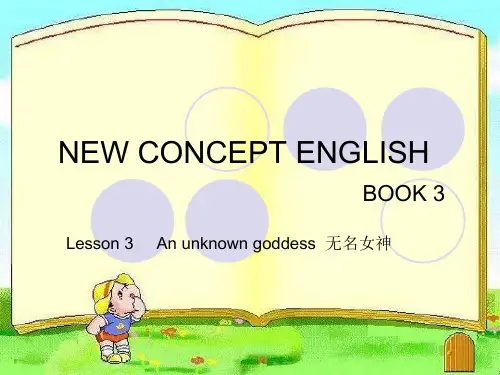
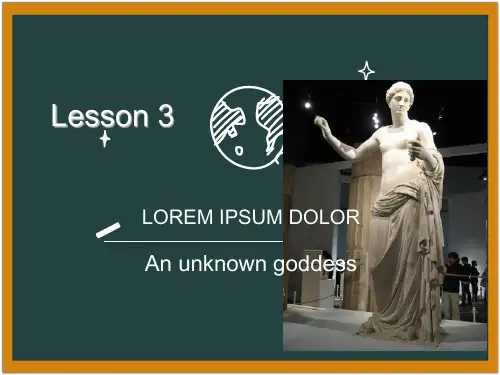
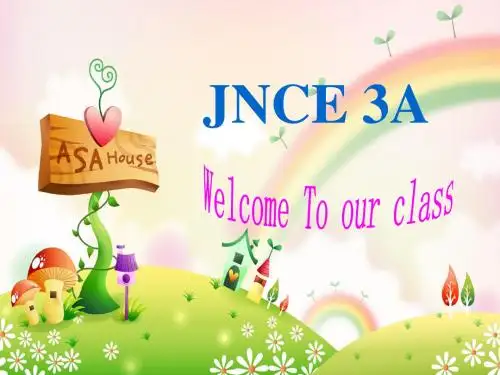
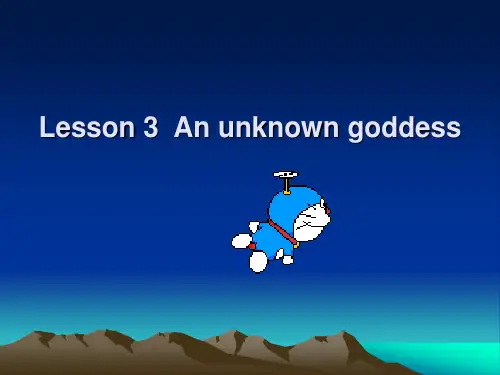


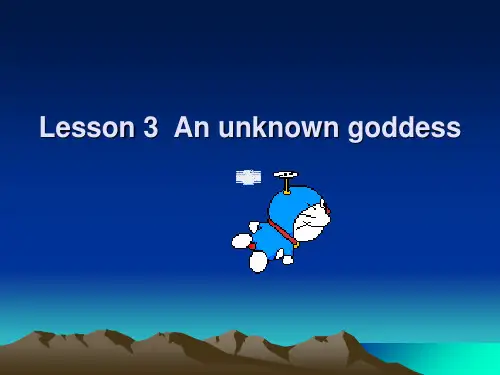
Lesson 3 An unknowngoddess 无名女神Listen to the tape then answer the question below.听录音,然后回答以下问题。
How did the archaeologists know that the statue was a goddess?Some time ago, an interesting discovery was made by archaeologists on the Aegean island of Kea. An American team explored a temple which stands in an ancient city on the promontory of Ayia Irini. The city at one time must have been prosperous, for it enjoyed a high level of civilization. Houses----often three storeys high----were built of stone. They had large rooms with beautifully decorated walls. The city was even equipped with adrainage system, for a great many clay pipes were found beneath the narrow streets.The temple which the archaeologists explored was used as a place of worship from the fifteenth century B. C. until Roman times. In the most sacred room of the temple, clay fragments of fifteen statues were found. Each of these represented a goddess and had, at one time, been painted. The body of one statue was found among remains dating from the fifteenth century B. C. Its missing head happened to be among remains of the fifth century B. C. This head must have been found in Classical times and carefully preserved. It was very old and precious even then. When the archaeologists reconstructed the fragments, they were amazed to find that the goddess turned out to be a very modern-looking woman. She stood three feet high and her hands rested on her hips. She was wearing a full-length skirt which swept the ground. Despite her great age, she was very graceful indeed, but, so far, the archaeologists have been unable to discover her identity.New words and expressions生词和短语goddess(title) /'g&dis/ n.女神sacred(1. 10)/'seikrid/ adj.宗教的,神圣的archaeologist(1. 1) /?a:ki'&ld{ist/ n.考古学家fragment(1. 10) /'fr$gm+nt/n.碎片Aegean(1. 2) /i:'d{i:+n/ adj.爱琴海的remains(1. 12)/ri'menz/ n.遗物,遗迹,废墟explore(1. 2) /ik'spl&:/ v.考察,勘探classical(1. 13)/'kl$sik+l/ adj.(希腊和罗马)古文化的promontory(1. 3) /'pr&m+nt+ri/ n.海角prosperous(1. 4) /'pr&sp+r+s/ adj.(经济上)繁荣reconstruct(1. 14) /?r(ikn'strkt/ v.修复的,昌盛的rest(1. 16)/rest/ v.倚放,放置civilization(1. 5) /?siv+l-ai'zeiM+n/ n.文明hip(1. 16) /hip/ n.屁股,臀部storey(1. 5) /'st&:ri/ n.楼层full-length(1. 16) /?ful'leRI/adj.(裙衣)拖地长的drainage(1. 7)/'dreinid{/ n.排水graceful(1. 17) /'greisf+l/ adj.优雅的worship(1. 9) /'w*:Mip/ n.祟拜identity(1. 17) /ai'dentiti/ n.身份Notes on the text课文注释1 the Aegean island of Kea, 爱琴海的基亚岛。